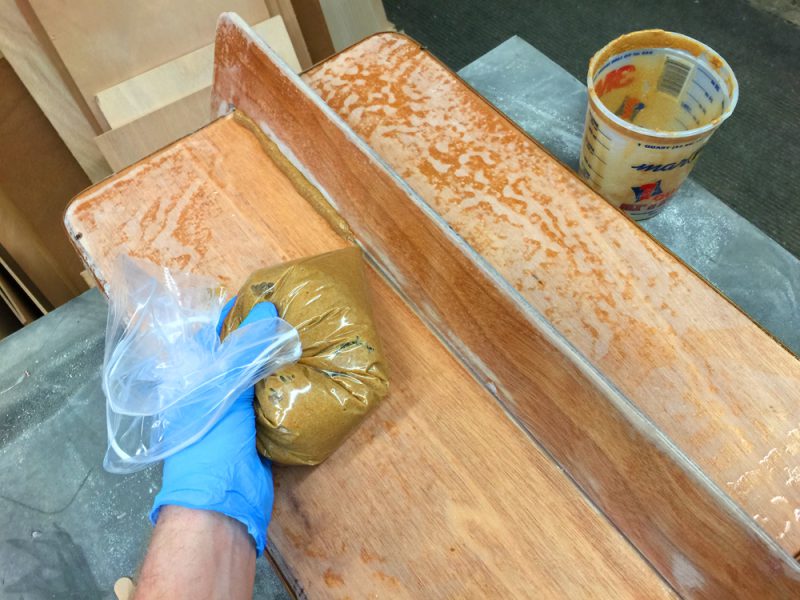Trade Secrets: Using a piping bag with epoxy

Got a lot of epoxy filleting to do? Or quite a few holes to fill? You might want to think about using a piping bag. It’s quick, clean and easy – and below, we explain exactly how to do it.
Whenever we go along to trade shows and boat shows, we typically demonstrate how to use a piping bag for filleting and filling. It’s exactly the same principle as piping icing onto a cake and people love it; without fail, you’ll hear someone say, “why didn’t I think of that idea?”.
It’s certainly a very handy technique for working quickly, especially if you’ve got quite a lot of fillets to make or small holes to fill. However, as with most tricks of the epoxy trade, there are a few rules and techniques to remember for the best results.
What kind of bag should I use?
You can use any strong, clean plastic bag, like the freezer bags you’d buy in the supermarket. If you really want to, you can even use a proper icing bag – including the nozzles, if you’re prepared to clean them afterwards! However, it’s not necessary at all. We’ve even used the plastic bag that the WEST SYSTEM® 101 Mini Pack comes in, and that works perfectly.
Just make sure the bag is strong; you don’t want it to split and leak epoxy all over your hands and your workspace.
How do I fill it?
It’s important to remember that you can only use piping bags with thickened epoxy. Straight resin and hardener mix will be too runny and will just slide out of the ends.
So, mix your resin and hardener and once thoroughly stirred add filler to produce a peanut butter consistency in your mixing pot, scoop it onto the mixing stick and push it into the corner of the bag, bit by bit until it’s filled.
As an additional tip, you can place your piping bag into a clean, empty container to help you fill it more easily. Just put the bag inside the container and roll the sides of the bag down, so that it’s easier to reach the bottom of the bag and put the epoxy straight in.
How do I use it?
Snip the corner of the bag off to the size of the epoxy blob or fillet that you desire, and – holding the mouth of the bag shut – squeeze the bag gently to push the epoxy out of the hole.
Remember that if you’re filleting, it’s best to wait until you’ve dispensed all the epoxy from the bag before you start shaping the fillets. Placing a mass of epoxy in a confined plastic bag will accelerate the exothermic reaction and make the epoxy go off more quickly – but once it’s out, the curing time will slow. The good news is that putting the epoxy into a piping bag should make it easy and fast to work with, so it shouldn’t accelerate the curing very much, if at all.
Thanks very much to Hamish Cook for this Trade Secret.
Want more advice on filleting? Have a look our two-part Trade Secret all about it.
Image credit: https://www.clcboats.com/life-of-boats-blog/build-a-small-boat-galley-box.html?jm=1

